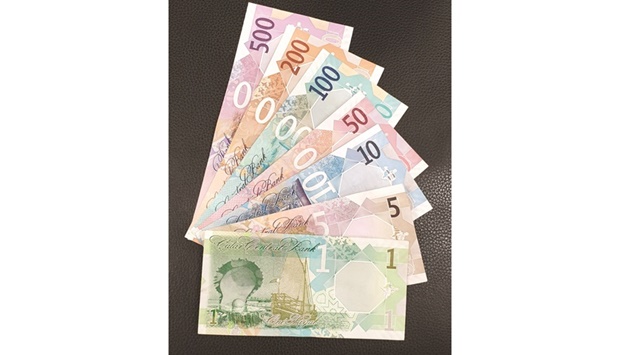Qatar’s exchange rate stability is expected to be maintained and price stability regained in 2022-2023, according to global trade credit insurance firm Allianz Trade.
“We expect the peg (3.64 to the USD) to hold as the Qatar Central Bank has large foreign exchange (FX) reserves to support the currency. The currency peg has ensured relative price stability since 2010,” Allianz Trade said in its country report.
In 2021, however, headline consumer price inflation rose to over 6% year-on-year (y-o-y) at the end of the year owing to base effects (deflation a year earlier), higher energy prices and global supply-chain disruptions.
“We expect these effects to be transitory and inflation to gradually fall back to around 2% at the end of 2022,” Allianz Trade noted.
Qatar’s recovery from the double shock of the global Covid-19 crisis and the drop in oil and gas prices in 2020 will be solid, the trade credit insurance firm said.
Real GDP contracted by -3.6% in 2020, less than the GCC average of -4.9%, thanks to a more diversified economy and lower dependence on oil revenues – Qatar’s main export product is natural and manufactured gas.
A moderate recovery was seen in 2021, with estimated growth of +2.5%. The recovery is forecast to gain momentum in 2022, thanks to continued higher gas prices and a high Covid-19 vaccination rate that should allow for a further reduction of lockdown measures and support consumer spending.
The FIFA World Cup 2022 taking place (in November / December) should also support economic growth through increased tourism revenues.
“Our tentative growth forecasts are around +4% in 2022 and +2.5% in 2023. However, potential renewed restrictions, for example due to the outbreak of new Covid-19 variants, or sustained supply-chain disruptions in the industrial sector pose downside risks to our forecasts,” Allianz Trade said.
Fiscal reserves are solid but rising public debt requires monitoring, it noted.
Qatar’s fiscal breakeven point has ranged between $35 and $55 per barrel of crude oil over the past decade. Hence the government has recorded large annual fiscal surpluses in most years, except for 2016-2017 when oil and gas prices had been persistently low for some time.
Even in 2020, a small surplus of +1.3% of GDP was achieved.
“We estimate the surplus to have widened to around +3% in 2021, thanks to higher gas prices, and project continued robust surpluses in 2022-2023,” Allianz Trade said.
Meanwhile, public debt rose from 25% of GDP in 2014 to 72% in 2020, in part due to declining nominal GDP. Even though Allianz Trade expects the ratio to decline gradually over 2021-2023 in the wake of the economic recovery, it will remain elevated and should be monitored closely.
Overall, however, Qatar will remain a large net external creditor, thanks to the huge foreign-asset position in the Qatar Investment Authority (QIA, a sovereign wealth fund currently estimated at approximately $350bn), Allianz Trade noted.
Business / Business
Qatar’s exchange rate stability may be maintained; price stability regained in 2022-2023: Allianz Trade

The currency peg has ensured relative price stability since 2010, says Allianz Trade in its country report.

